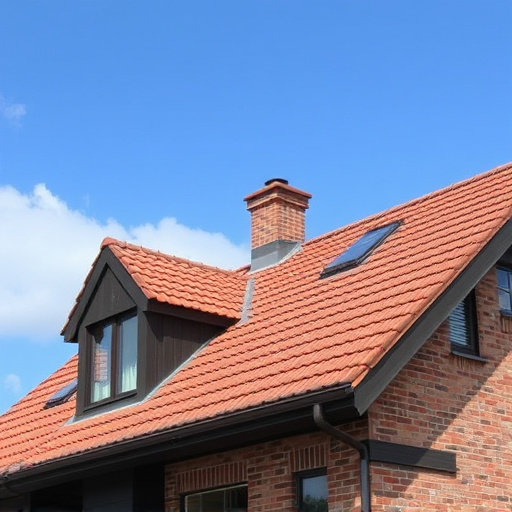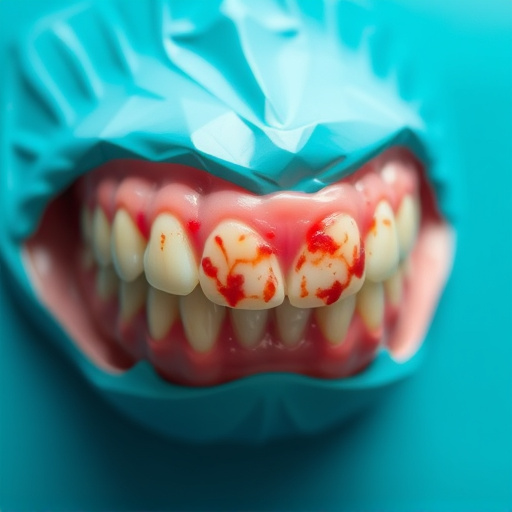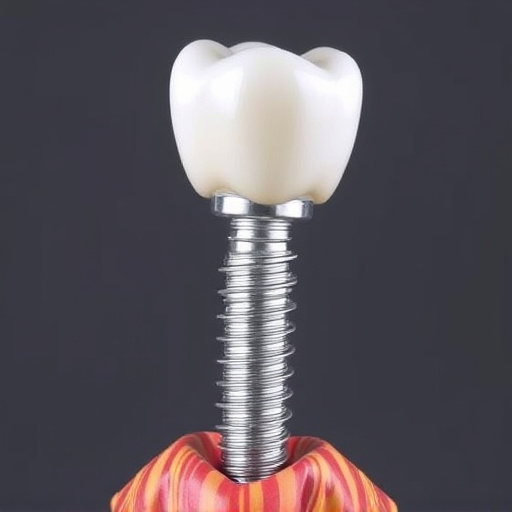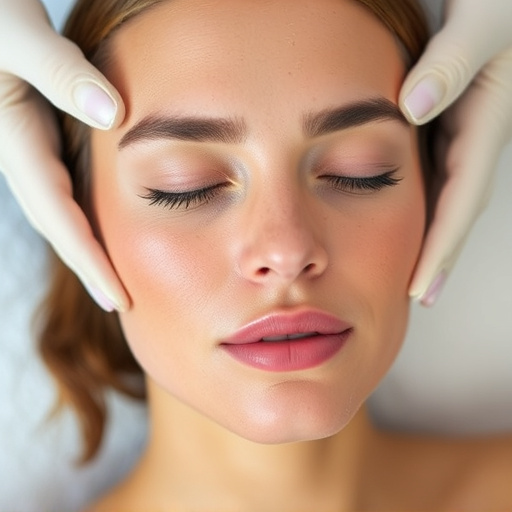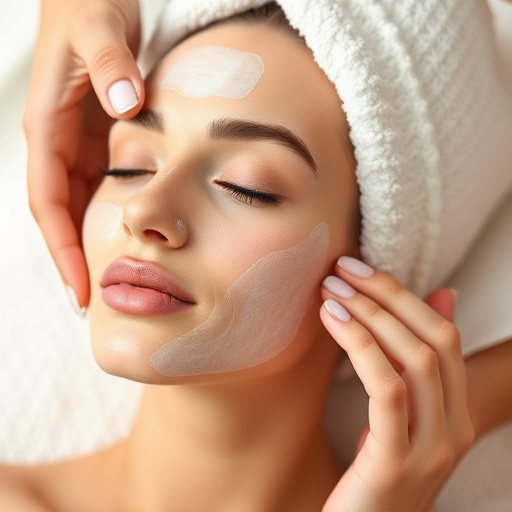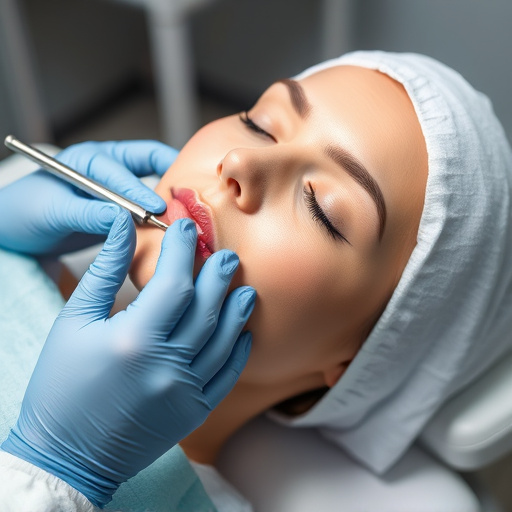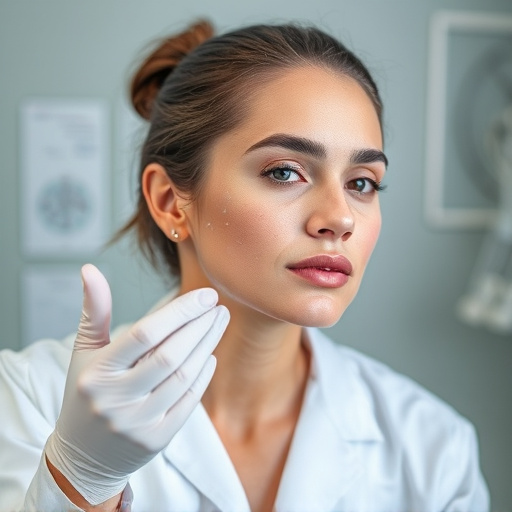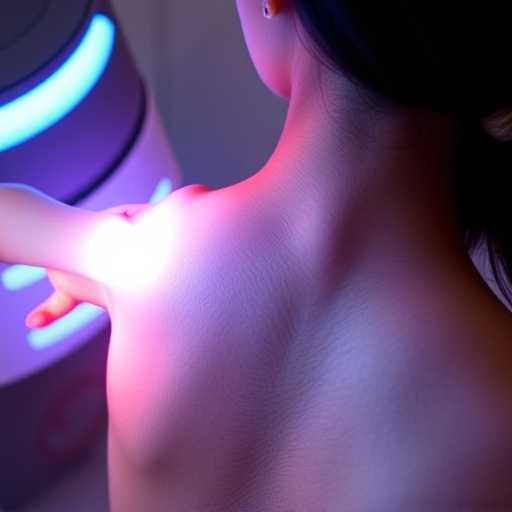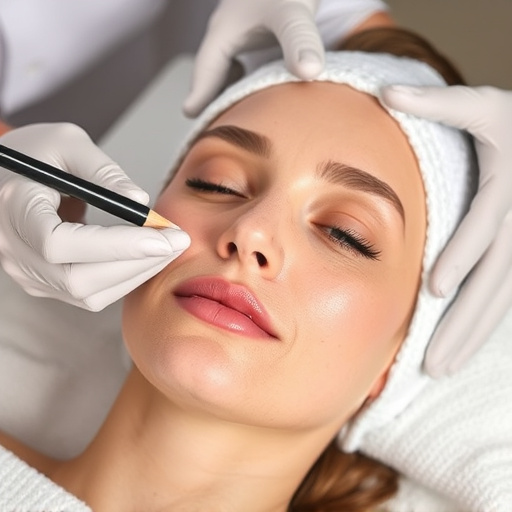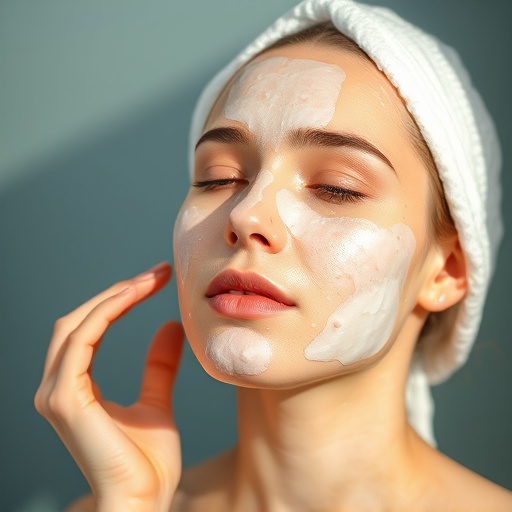Back acne, a common yet often neglected issue, demands specialized care due to its unique characteristics and causes. Treatment involves understanding the severity of the condition, from non-inflammatory to severe inflammatory types. Personalized strategies include over-the-counter or prescription medications, cleansing gels, topical retinoids, and daily sun protection. Consistent, gentle skincare routines and non-surgical treatments prevent recurrence. Prompt action on recurring issues ensures clear, healthy skin. Back acne treatment requires tailored, dedicated care for effective management.
Struggling with back acne? This comprehensive guide offers a step-by-step approach to achieving clear, healthy skin. We’ll first demystify back acne: its causes, from hormonal fluctuations to lifestyle factors, and types, ranging from mild inflammations to cystic breakouts. Then, we’ll help you build a personalized treatment routine, covering topical treatments, dietary changes, and lifestyle adjustments. Lastly, discover maintenance strategies to prevent future breakouts and ensure long-term clear skin.
- Understanding Back Acne: Causes and Types
- Building Your Personalized Treatment Routine
- Maintenance and Prevention Strategies for Long-Term Clear Skin
Understanding Back Acne: Causes and Types
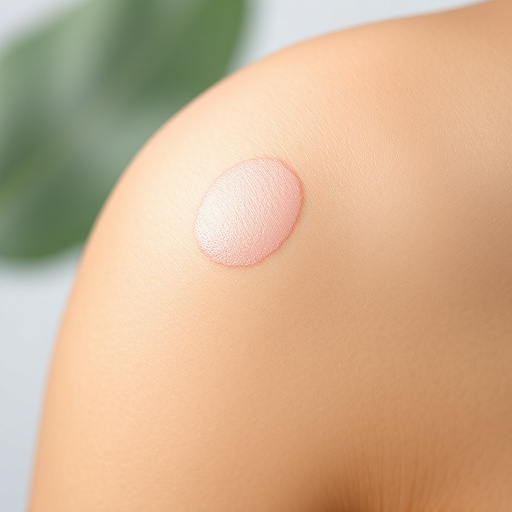
Back acne, a common skin concern, often goes overlooked but deserves equal attention as its facial counterparts. Understanding its causes is pivotal in devising an effective back acne treatment routine. This condition can be categorized into several types, each requiring tailored care. Non-inflammatory back acne, characterized by open or closed comedones, is typically linked to hormonal fluctuations and excessive sebum production. Inflammatory forms, such as nodular or pustular back acne, are more severe and result from infected hair follicles.
Various factors contribute to the development of back acne, including sweating, friction from clothing, and certain medications. Unlike facial treatments that focus on the delicate skin, back acne treatment demands a more robust approach, considering the larger surface area and often thicker skin. Hydrating facials, while beneficial for overall skin health, might not be sufficient to address deep-seated issues. A comprehensive strategy involving cleansing, exfoliation, and targeted topical therapies is essential to combat back acne effectively.
Building Your Personalized Treatment Routine

Creating a personalized back acne treatment routine involves understanding your skin’s unique needs and preferences. Start by assessing the severity of your back acne—is it mild, moderate, or severe? This will guide your choice of products. For instance, if you have mild back acne, over-the-counter treatments with benzoyl peroxide or salicylic acid may be enough. But for more persistent or severe cases, consulting a dermatologist is advisable; they can prescribe stronger medications or recommend procedures like chemical peels or laser therapy, which are effective in targeting deep cysts and improving pore refinement.
Next, consider incorporating targeted back acne treatments into your existing skincare regimen. This could include cleansing gels designed to unclog pores, topical retinoids for exfoliation and skin turnover, and medicated creams or ointments to reduce inflammation and fight bacteria. Don’t forget the importance of sun protection; using a broad-spectrum sunscreen daily will help prevent hyperpigmentation, a common side effect of back acne that can be exacerbated by sun exposure. Combining these steps with consistent, gentle exfoliation (not scrubing) and wearing breathable clothing can significantly enhance your back acne treatment outcomes.
Maintenance and Prevention Strategies for Long-Term Clear Skin
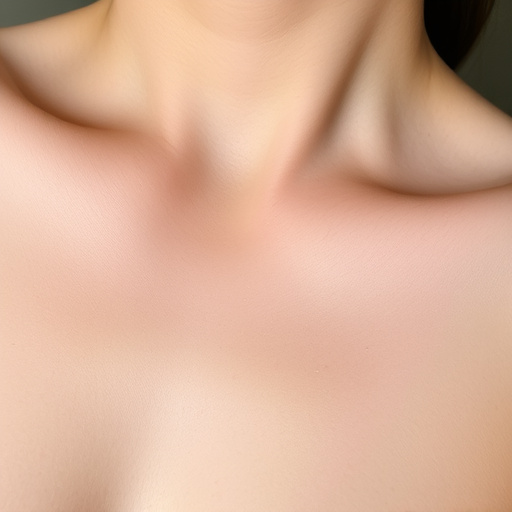
Maintaining clear skin after treating back acne involves a combination of consistent care and preventative measures. Once your skin is cleared up, it’s essential to establish a regular skincare routine tailored for your needs. This typically includes gentle cleansing with a mild cleanser suitable for sensitive skin, as well as exfoliation to remove dead skin cells and unclog pores. Regularly applying moisturizers can also help prevent dryness and irritation.
For long-term success in back acne treatment, consider incorporating non-surgical treatments like pore refinement procedures or advanced anti aging treatments into your skincare regimen. These professional interventions can further minimize scarring, refine skin texture, and maintain the healthy appearance of your skin. Remember that consistency is key; adhering to a preventative skincare routine and addressing any recurring issues promptly will ensure your hard-earned clear skin remains intact.
Back acne, while often overlooked, can significantly impact one’s confidence. By understanding its causes and types, you’re already halfway through the battle. This guide has equipped you with the tools to build a personalized treatment routine tailored to your skin’s needs. Remember, consistency is key; maintain your routine and adopt preventive strategies for long-lasting clear skin. With dedication, you can bid farewell to back acne and reclaim your confidence.

